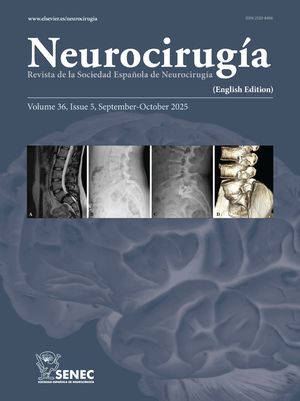Se presenta el resultado de una auditoría acerca del tratamiento de la hemorragia subaracnoidea aguda (HSA) en una mini-unidad de Neurocirugía de reciente creación y según un protocolo asistencial adaptado al Centro. Los objetivos han sido determinar si se cumplen los mínimos necesarios para continuar con dicha actividad y detectar los aspectos que puedan incidir en una mejoría de la calidad asistencial.
Se estudian 74 pacientes consecutivos de HSA atendidos en el período 1994–96. En 10 casos no se encontró patología aneurismática tras el estudio neurorradiológico (Grupo 1), 49 pacientes fueron intervenidos por aneurisma (Grupo 2A) y los 15 restantes, con aneurisma diagnosticado o sospechado, no fueron intervenidos (Grupo 2B). La mortalidad total en el momento de alta es del 16.2% y llega al 20.3% a los seis meses. Los buenos resultados (Glasgow Outcome Scale 1 ó 2) son del 59.4% al alta y del 71.6% a los seis meses. En el Grupo 1 no hay mortalidad y los resultados buenos son del 100%. La mortalidad postquirúrgica es del 8.2%, lo que supone un tercio de la del Grupo 2. Se estudiaron también una serie de indicadores asistenciales, como son el tiempo desde la HSA al ingreso y desde el ingreso a la angiografía e intervención, así como la estancia en Cuidados Intensivos y la estancia total.
La comparación de los datos obtenidos con los recogidos de la literatura demuestra que es posible proporcionar una asistencia de calidad a los pacientes con HSA en las mini-unidades de Neurocirugía. En nuestro medio, para llegar al tratamiento quirúrgico más precoz del aneurisma se debe reducir el tiempo de diagnóstico angiográfico y lograr una mayor disponibilidad de quirófano, ya que los pacientes acceden muy pronto al hospital tras la HSA.
The results of an auditory on the treatment of acute subarachnoid hemorrhage (SAH) in a new Neurosurgical mini-Unit are presented. A management protocol suited for our Center was developed. The objectives of the study were assess if our Neurosurgical Unit reaches the standards for treatment of SAH and investigate if there are deficiencies to be ameliorated.
A consecutive series of 74 patients with SAH treated between 1994–96 are included. In 10 cases neuroradiological studies did not found any vascular lesion (Group 1), in 49 patients an aneurysm was found and surgically treatet (Group 2A) and 15 patients with evidence or suspected aneurysm were no surgically treated (Group 2B). At the end of hospitalization the total mortality was 16.2% and 59.4% exhibited a good recovery (Glasgow Outcome Scale 1 or 2). At the six moth evaluation mortality was 20.3% and good recovery 71.6%. There was no mortality in Group 1, with a 100% of favourable outcome. Postoperative mortality was 8.2% being a third of the Group 2. Sorne other sanitary indicators were studied: time from SAH to admission, from admission to aneurysmal diagnosis and surgical treatment, intensive care unit and hospital length stay.
Comparison of our results with those obtaind from national and international literature shows that it is possible give a good quality assistance to patients with acute SAH in Neurosurgical mini-Units. Considering the earIy referal of the patients to our Hospital, a reduction in the time of aneurysmal diagnosis and more operative room disponihility should be necessary to achieve a more earIy surgical treatment of aneurysms.
Article

If it is the first time you have accessed you can obtain your credentials by contacting Elsevier Spain in suscripciones@elsevier.com or by calling our Customer Service at902 88 87 40 if you are calling from Spain or at +34 932 418 800 (from 9 to 18h., GMT + 1) if you are calling outside of Spain.
If you already have your login data, please click here .
If you have forgotten your password you can you can recover it by clicking here and selecting the option ¿I have forgotten my password¿.






